Wakefield, Quebec: Back to the land close to Canada’s capital
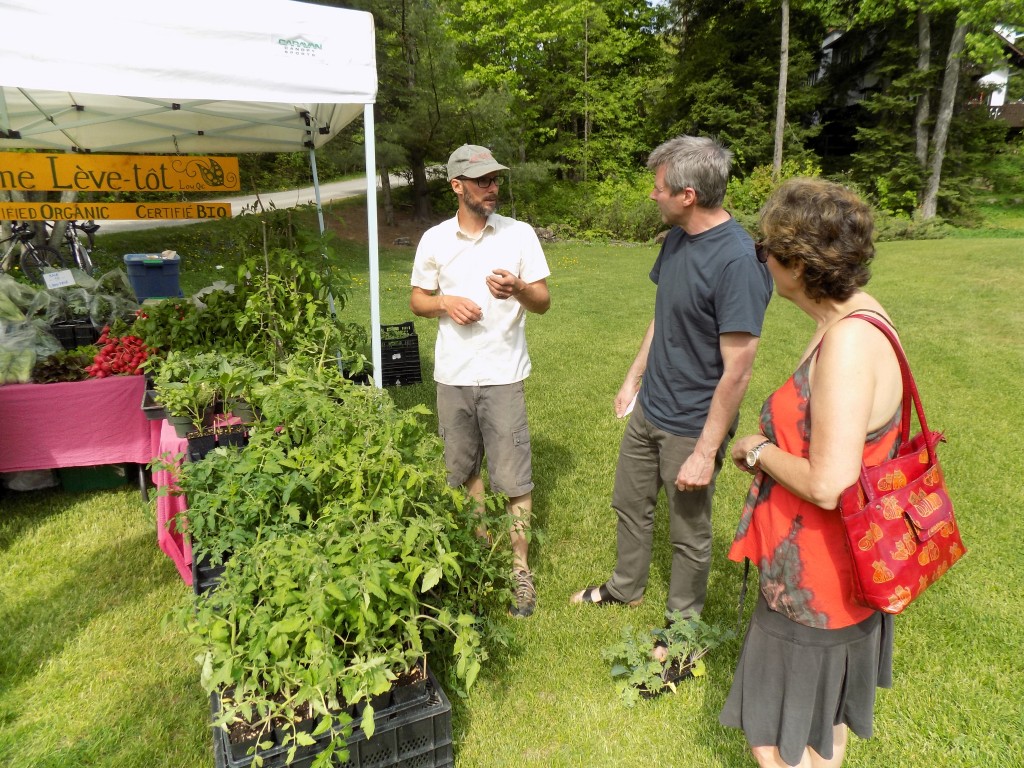
Richard Williams (left), who owns Ferme Leve-tot with partner Charlotte Scott, talks tomato plants with customers at the Wakefield Farmer’s Market. Photo by James Morgan
An occasional escape to the country is important for many city dwellers, especially those whose roots are in the country or small towns and villages. Buying goods from the country seems to have more significance when they’re purchased closer to the source too. Just north of Gatineau, Quebec, a 30 minute drive up Route 5 from Ottawa, is the village of Wakefield, home to a fine little farmer’s market that takes place on Saturdays from 9:00 am to 1:00 pm on the lot next to the Alpengruss Motel from May to October.
Wakefield is a unique place. It’s on the Gatineau River, surrounded by low mountains, the Gatineau Hills, a sort of foothill range for the much higher Laurentians to the northeast. The village has a personality that’s slightly away from the mainstream. It’s been a popular place for people looking to “get back to the land” to settle. Many longtime residents have never really left the land. Old log barns and rugged, boulder-studded pastures are common.
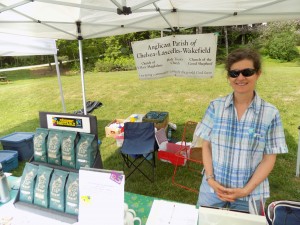
Andrea Rowe of the Anglican (Episcopal) Parish of Chelsea-Lascelles-Wakefield serves up fair-trade coffee at the Wakefield Market. Photo by James Morgan
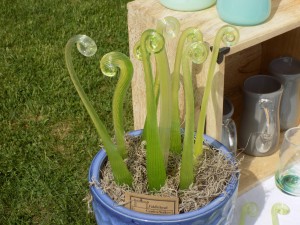
These glass garden row markers shaped like fiddleheads (fern sprouts) are the work of Wakefield glass blower Jennifer Bennett. Photo by James Morgan
Homegrown and produced products are serious business in Wakefield and the surrounding town of La Pêche. It was the first town in Quebec to declare itself officially a Fair Trade Town, and that shows through at the farmer’s market. Ferme lève-tôt, (that’s French for “Up Early Farm”) from the nearby town of Low, is one of the several certified organic vegetable farms that is at the market every week. They have greenhouses, so it’s possible to buy fresh lettuce and kale from them in the spring, and asparagus traffic was pretty heavy at the market on a recent Saturday too. Ferme et Forêt (farm and forest) from just outside Wakefield specializes in organic and wild foods. They sell homemade granola, herbal tea, maple syrup, and eggs at the market. I’m not usually a big supporter of product placement, but an ice cold cup of their sumac iced tea on a hot day is perfect. Each week, the market also features tables selling baked goods and meat too. For market visitors wanting a quick bite to eat or a coffee to wake them up on a weekend morning, there is a popular crêpe stand, and the local Anglican (Episcopal) churches sell fair trade coffee. Wakefield’s market isn’t just all about food though. Local artisans and craftspeople show up every week to sell wooden furniture, jewelry, and hand-blown glass.
The rugged landscape and culture of Wakefield is similar to that of the North Country or Vermont. The Gendron Covered Bridge Spans the Gatineau River at the north end of the village. The river itself is more like a lake through Wakefield because of hydroelectric dams downstream, much like New York’s Raquette River. The Black Sheep Inn is a major destination for bands and fans of many varieties. Until 2011, Wakefield was also the northern terminus of a steam locomotive-powered tourist train from Hull. Unfortunately due to ownership changes and financial problems, the train stopped running. The tracks are now rusting and getting overgrown with weeds, but they still run on the sliver of land between the main street of town and the river, ending at an idle wooden water tower and old manually-operated turntable. The local business community and municipal officials are considering getting the train running again. The situation is similar, although far less emotionally-charged, to the plan to shorten the length of the tourist train route in the Adirondacks. Unique shops and restaurants line the streets in Wakefield. The former mill is now an inn, and the Shouldice Spring is a popular for those wanting cold, clear, clean free water.
There are very Canadian aspects of Wakefield too. Former Prime Minister Lester B. Pearson (1963-1968) is buried there, just one row over from renowned landscape photographer Malak Karsh, whose equally renowned brother was portrait photographer Yousuf Karsh. The Canadiana of Wakefield is compounded too by its landscape, bilingualism, and the fact it’s in the National Capital Region. For visitors to the capital, or anyone who has already called the region home for many years, the Wakefield Farmer’s Market and the village’s other unique features make it an enjoyable country close to the city destination.





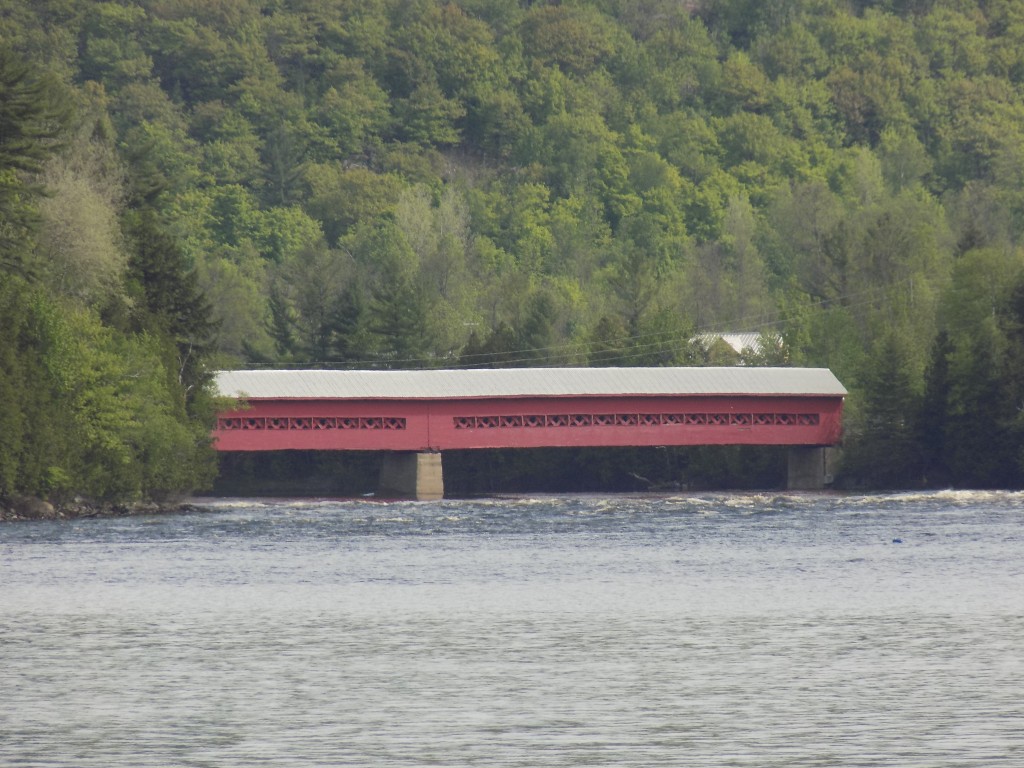
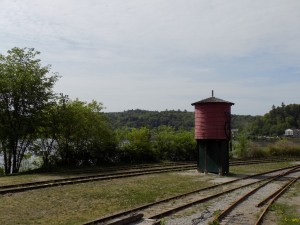
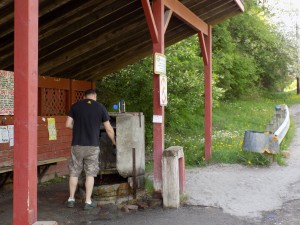



[…] Read the full article here: http://blogs.northcountrypublicradio.org/allin/2016/06/05/wakefield-quebec-back-to-the-land-close-to… […]